Can Alternative Fuels Power Carbon-Neutral Farming?
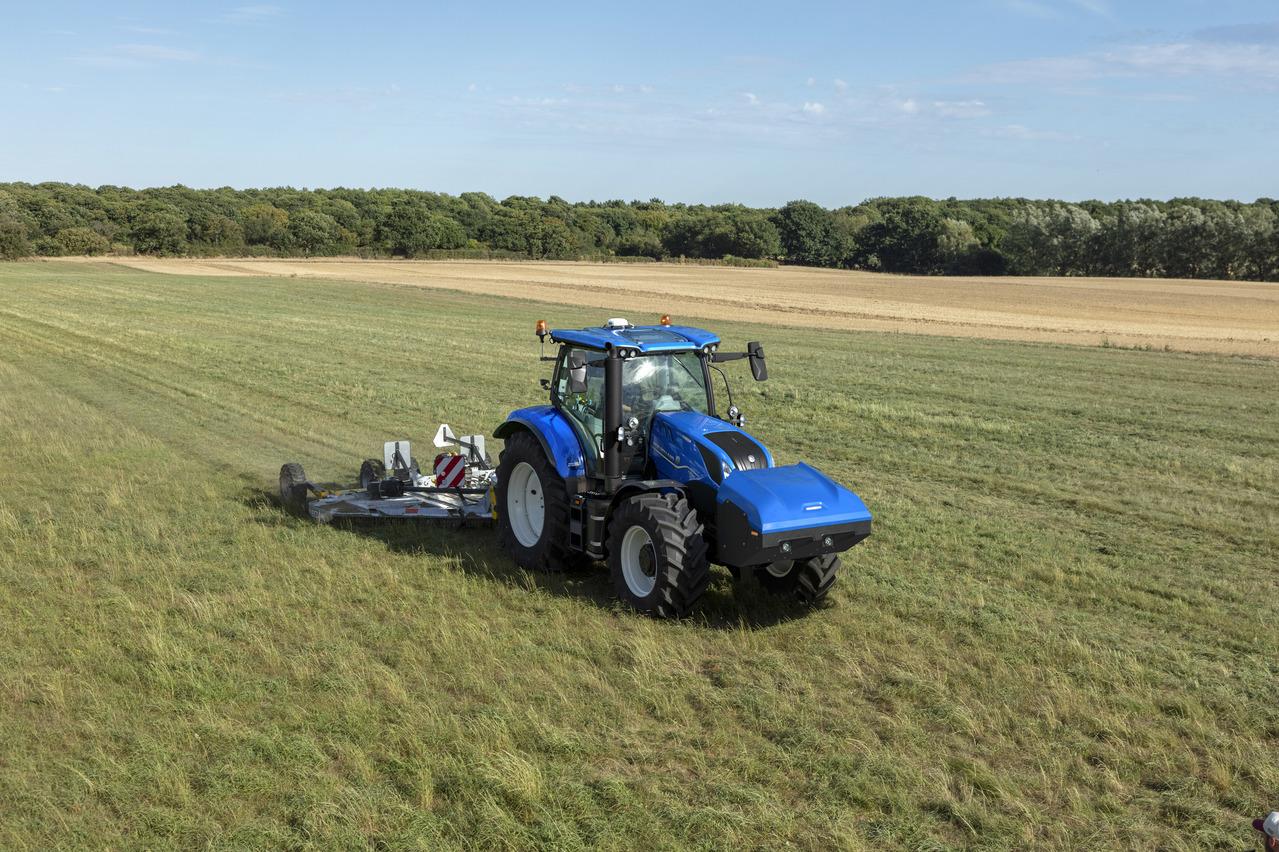

When you think about vehicle innovations that can reduce greenhouse gas emissions, the internal combustion engine is likely the last thing on your mind. But New Holland Agriculture recently launched a new tractor onto the market that utilizes just such a powertrain. And though counterintuitive, the tractor offers the possibility to tap into an enormous opportunity to reduce greenhouse gas emissions and power carbon-neutral farming.
That’s because the company’s new tractor, the T6.180 Methane Power, does not run on diesel, but instead, as its name implies, is powered by methane. More importantly, the opportunity to power the tractor with bio-methane — which can be sourced from organic waste produced on the farm in a closed-loop system — provides a compelling opportunity for energy self-sufficiency.
It’s an important development in emissions reduction, which for New Holland has been close to two decades in the making. The company first looked toward carbon savings back in 2006 under its Clean Energy Leader initiative. Initially, this focused on efforts to make New Holland tractors capable of running on biodiesel, which the company achieved in 2007.
Though a good first pass, Mark Howell, New Holland’s global product manager of alternative fuels, and his team wanted to take things further and asked themselves: What about a product that creates no emissions at all?
The journey toward a zero-emissions tractor begins
This refocused efforts on hydrogen fuel cell technology initially, but in the process, limitations came to light on the availability of hydrogen and associated vehicle costs.
Instead, farmers were looking for something more near-term as a workable solution — which pivoted New Holland to develop a tractor that could run on methane. After several iterations over the past decade, the company developed the T6.180 Methane Power concept tractor, which won the sustainable tractor of the year award in 2019.
Methane is the key component of natural gas, a fossil fuel. And while the T6.180 can run on compressed natural gas (CNG) that, of course, is not what unlocks the tractor’s environmental opportunity.
“Turning waste into a commodity,” as Howell describes it, is where greenhouse gas reduction comes into play. And farms generate a lot of organic waste that has to be dealt with one way or another. If animal manure and other organic waste generated on the farm is left to decompose open to the elements, it results in the release of methane which vents directly into the atmosphere.
Turning waste into resource on the farm
The waste-to-commodity value chain begins when farmers instead collect and processes this waste through an anaerobic digester (AD). Containing the waste within a digester and allowing it to decompose without oxygen (that is, anaerobically) results in the production of methane, which can be captured, refined, compressed and used to power the T6.180 tractor.
Of course, there is some specialized capital equipment that farmers would need to harness this energy. AD technology is not new, and many large industrial farms in the United States already use large-scale digesters. The good news is that AD technology is always improving such that the necessary scale of operation is constantly being reduced. This means much smaller and cheaper AD projects are becoming viable, unlocking the potential for smaller family-owned farms to operate a closed-loop system for methane production.
To put that in context, any farm with 100 to 900 cows can utilize the technology and capture their own gas from the waste they generate, Howell explained. Alternatively, a number of smaller farms can form co-ops to capture enough waste collectively to generate their own methane. “Farmers can share the gas cleanup equipment because it’s mobile,” Howell told us. “It’s not much bigger than a grain trailer.”
Scaling the journey to carbon-neutral farming
New Holland recognizes the opportunity for unlocking this potential. In early 2023, its parent company CNH Industrial took a majority stake in Bennamann, a U.K.-based company that specializes in small-scale AD projects. In partnership, New Holland and Bennamann are able to provide a turnkey operation for a carbon-neutral, or even carbon-negative, solution for farmers to operate the T6.180 Methane Power tractor.
In light of rising diesel and natural gas prices, setting up a digester project can instead lock in predictable fuel pricing over time, and any investments the farmer has to make will pay back within 8 years, Howell said.
It’s a systems thinking approach. As well as running carbon-neutral tractors, farmers might also produce enough methane to run their own power generators on the farm. Alternatively, excess refined methane can be injected into the local power grid.
Further, the solids that are periodically removed from the ADs after organic matter has decomposed — called digestate — constitute a high-quality organic fertilizer which can be used on the land. “The fertilizer is as good a fertilizer as the manure that went into the digester,” Howell told us. “It hasn’t degraded in nitrogen, phosphate or potash.” The digestate is also much easier to spread on the land than raw manure, while bio-CO2, an increasingly valuable output, is also produced by on-farm AD systems.
When bio-methane is used for fuel, the T6.180 methane-powered tractor can seamlessly replace the existing duty of a conventional diesel-powered one.
New Holland mapped the power and torque of the T6.180 to replicate exactly the same performance characteristics as its existing diesel engine. Also, since it takes just seven minutes to fully replenish the methane fuel tanks, downtime during the work day isn’t significantly different from a diesel tractor, either. “From a driver’s point of view, you can jump from a diesel to the gas tractor, and just drive and get on with your job,” Howell said.
Beyond the farm
The tractor has multiple applications beyond farming too, such as hedge cutting, lawn mowing and even snow clearing — all of which can be fueled by bio-methane.
New Holland’s T6.180 Methane Power tractor also has the seal of approval from Charlotte Morton, CEO of the World Biogas Association. “I love the circularity around the fuel being generated from organic waste on the farm,” she told us. “It’s such a wonderful story.”
Morton also stressed that harnessing bio-methane is a massive opportunity, explaining that if we were to capture this gas from all available organic wastes globally, “the potential that’s there is roughly equivalent to one-third of today’s natural gas demand.” At today’s prices, that equates to roughly $104 billion.
The solution comes to market at an apt time: Under the Global Methane Pledge, signed by over 100 countries, the aim to reduce global methane emissions by at least 30 percent from 2020 levels is just seven years away. Consequently, the waste-to-value opportunity in upgrading farm waste to fuel, coupled with the New Holland T6.180 Methane Power tractor, meshes perfectly with this urgent goal.
This article series is sponsored by CNH Industrial and produced by the TriplePundit editorial team.
Image courtesy of New Holland Agriculture
New Partnership Taps Indoor Farming to Grow Food Security in Texas
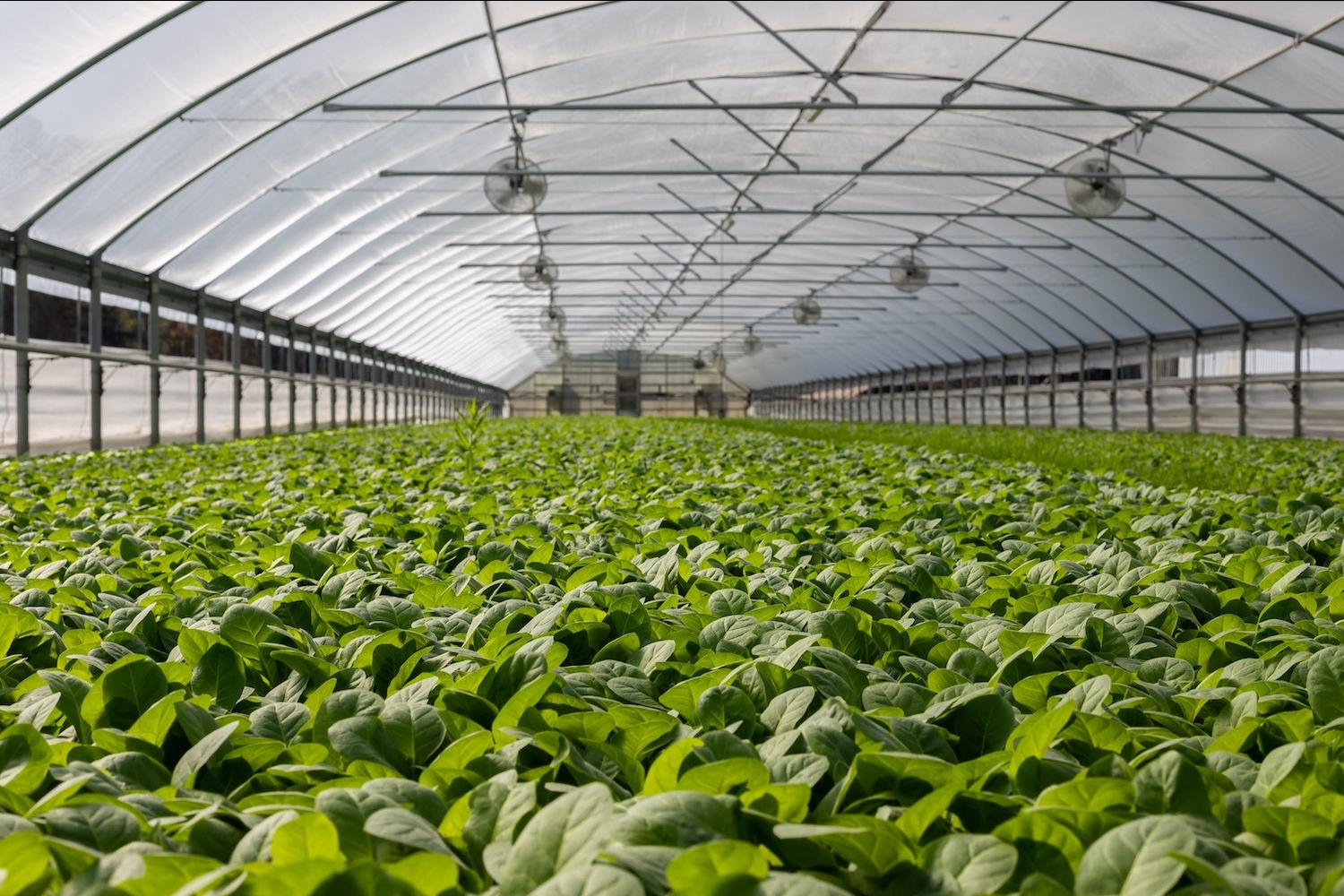
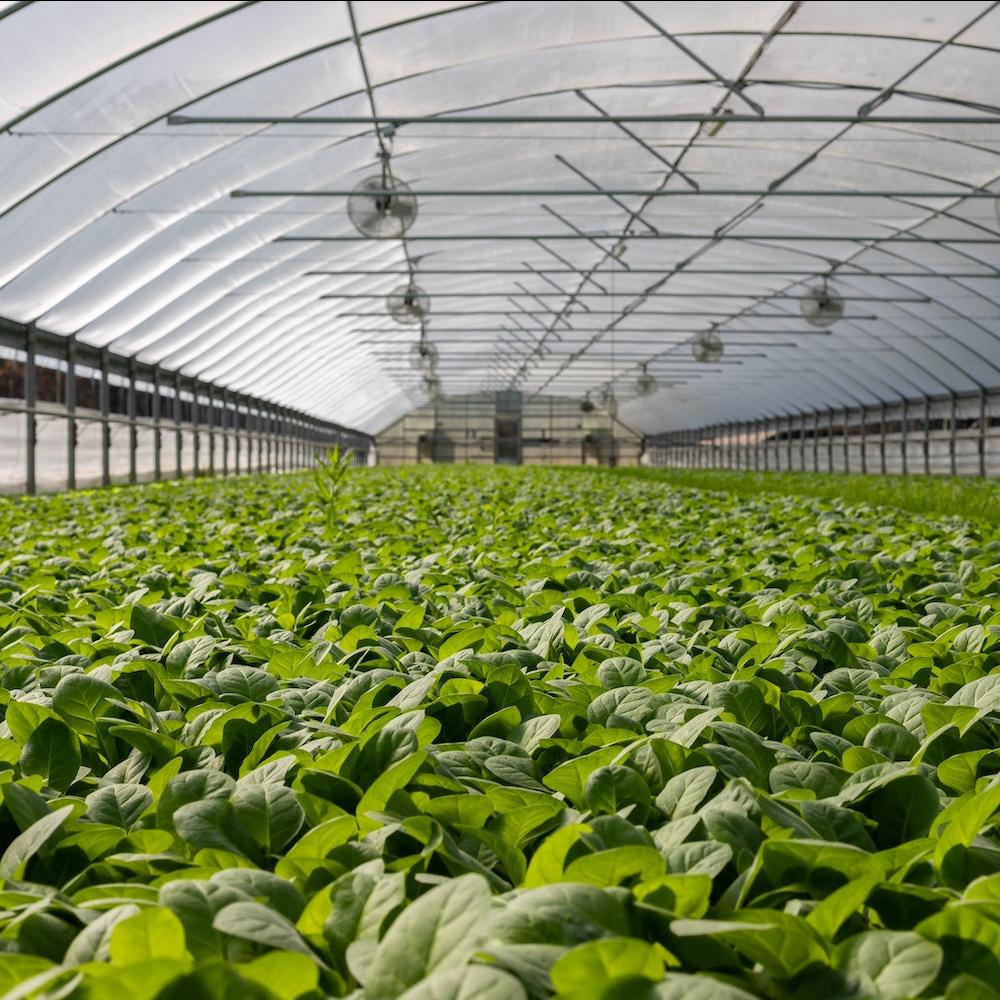
The pandemic, the war in Ukraine, climate change, and the cost-of-living crisis drove food insecurity to unprecedented heights in the U.S. and worldwide. In Texas alone, 1 in 8 people — including almost 1.4 million children — face hunger, according to Feeding America.
In December, the Texas Department of Agriculture submitted a report to the state legislature outlining the factors contributing to food insecurity. It pointed to the climate crisis as the main culprit, with stagnant wages, rising cost of living, and lack of food access in rural areas among other key factors.
The agency recommended several policy changes including delivery options for SNAP (food stamp) benefits used to purchase healthy foods and boosting the state’s farm-to-school program, which incorporates locally-grown produce in school meals and provides nutrition education to K-12 students.
The report also suggests raising the minimum wage. To meet the basic needs of a two-parent, one-child household in Texas, both parents must earn an hourly wage of $17.44 working 40 hours per week. The minimum wage in Texas is only $7.25 per hour.
As the state considers policy changes, agricultural output remains a problem. The agricultural industry in Texas was slammed by extreme droughts and floods over recent years.
Partners look to improve food security in Texas through indoor farming
A new coalition of private- and public-sector organizations plans to bring relief to the state by accelerating agricultural innovations that address barriers to food security. This partnership between Intel, SVG Ventures' Thrive initiative, and Texas A&M’s AgriLife Extension Service seeks to advance hydroponics, vertical farming, aquaponics, and other controlled environment agriculture (CEA) innovations.
SVG Ventures’ Thrive, an agrifood investment platform, brings corporate partners to the table. The Texas A&M University program provides agricultural expertise and outreach to producers. And Intel backs the project with technology development resources.
"It has become increasingly clear that traditional agriculture will be challenged to meet the food demands of the future," John Hartnett, CEO and founder of SVG Ventures’ Thrive initiative, said in a statement. "We are delighted to partner with Intel and Texas A&M to accelerate CEA innovations to drive improvement in food and nutrition security."
CEA, also known as indoor farming, involves growing crops in an environment largely separate from nature. The separation makes agricultural output less dependent on favorable weather patterns, which becomes more important as the climate crisis makes weather more extreme. Growing indoors also allows for decreased pesticide use and nutrient recycling that ensures fertilizers are not leached into local waterways.
There is great potential for CEA to create sustainable food systems that improve food security, but it uses large amounts of electricity. It can be more fossil fuel intensive than traditional agriculture if there is not enough clean energy available to use.
The bottom line: Indoor farming offers real potential, but more work is needed
Though questions about the environmental sustainability of CEA systems remain, indoor farming has food security benefits. The new coalition is mapping the innovation landscape of Texas’ food system, identifying both challenges and opportunities, in order to scale their work and address nutritional needs in the state.
By utilizing the technology, outreach, and financial resources of the coalition, the group is working to create a local food system that feeds Texans and can scale across regions.
Image credit: Mark Stebnicki/Pexels
Anti-Woke, Who?: Employees and Customers Want to See Companies Speak Out


Demonstrators gather in Denver in 2022 to protest restrictive abortion policies and rising gun violence in the U.S.
Given rising political pushback against environmental, social and governance (ESG) policies in business, many corporate leaders are staying mum about their non-financial programming. But research indicates such a strategy hardly sets companies up for success.
Seven in 10 U.S. employees agree that companies should respond to seemingly divisive social issues like gun violence, abortion access and climate change, according to recent polling from BSR and Morning Consult. Related research from IBM found that companies with strong ESG performance tend to be more profitable as U.S. consumers continue to seek out sustainability.
Let's take a closer look at what the data tells us — and why brands should rediscover their voice on the major issues of the day.
We're not as divided as we might think
The "anti-woke" rhetoric from politicians and pundits makes the U.S. public seem more divided than ever, but research indicates we agree on more than we might think.
At least three-quarters of Americans say it is important for their state to have social policies that address gun violence (82 percent), voting rights (78 percent), and paid family and medical leave (78 percent), according to BSR's survey. And even as right-leaning state governments adopt more restrictive policies, more than half of U.S. adults feel it's important for their state to safeguard abortion access and LGBTQ rights.
"We need to debunk the narrative that these are highly divisive issues across the country,” Jen Stark, co-director of BSR’s Center for Business and Social Justice, said in a statement announcing the research. “Many have significant majority support from people across America, a fact that can get lost in the way these issues are typically covered in the media."
Importantly, people are looking to their employers to get involved. By a 4:1 margin, U.S. employees say they want to be a part of a business that promotes social justice internally through workplace policies, according to BSR. They also prefer employers that take action outside of their own walls: Only 9 percent of employees said they would be less inclined to work for a company that invests in and advocates for social justice causes, while five times as many said they'd be more likely to seek employment at a company that does this.
"Business can and should find courage to take action on these issues which are important for and aligned with the views of their workers and customers," Stark said. "These issues are material, and how a company responds can impact their reputation.”
People are scared, and they're looking for companies to lend their voice and help
In particular, two-thirds of employees agree that companies should respond to gun violence and climate change, as these issues become increasingly top-of-mind for Americans.
In another tragic month of senseless gun violence — including two young people shot for mistakenly approaching the wrong houses and a mass shooting at a 16th birthday party over the weekend — a shocking report from the Kaiser Family Foundation sheds light on just how much Americans are affected.
One in five Americans have been personally threatened with a gun, according to KFF's research, and nearly as many have lost a family member to gun violence or seen someone get shot. As Susan McPherson observed in last week's edition of her McPherson Memo newsletter, "Gun violence and the mayhem it causes are now a constant and terrifying symbol of our society."
Meanwhile threats of climate change are causing more and more anxiety among the public: Over two-thirds (67 percent) of Americans are concerned about increasingly harsh living conditions due to climate change, with 1 out of 4 worried they may have to give up long-term goals like starting a family, according to January polling.
As people grow more concerned about issues like gun violence, climate change, abortion access and LGBTQ rights, many U.S. state governments are moving in the opposite direction — enacting laws that loosen gun restrictions, clamp down on reproductive and LGBTQ rights, and lock in decades more emissions from fossil fuels. Against this backdrop, companies are challenged not to back down from "anti-woke" crusaders at the state level, but to step up and influence policies in a way that aligns with what their employees and customers want to see.
"Increasingly, companies are navigating a new reality where they are expected to help shape state policy by taking action on issues that affect the health, well-being, and safety of workers and their families," said Stark of BSR.
Customers are looking for real ESG leadership
"While the conversation has become controversial, with pundits pitting the ethics of environmental, social, and governance (ESG) initiatives against their economic costs, the data tells a different story," the IBM Institute for Business Value concluded in another report released this week.
IBM's report is the latest to connect ESG performance directly to the bottom line, following similar conclusions from the consulting firm Center for Sustainability and Excellence and the research technology company Glow earlier this year. IBM's research in particular found that companies leading on ESG performance are also 43 percent more likely to outperform on profitability. Leaders at these companies are 52 percent more likely to say ESG efforts have a "huge impact" on profits.
"The key is to see ESG as a transparency enabler," IBM found in the report. "When viewed as a vehicle for driving business value — rather than a narrow reporting exercise — ESG generates insights that create opportunities and boost performance."
As consumers seek out more sustainable brands, they're also less likely to accept company claims at face value: Only 20 percent of consumers say they trust the statements companies make about environmental sustainability, down from half just two years ago — increasing the urgency for companies to ensure they're walking the walk.
IBM found that lack of consistent and actionable data hampers corporate progress on key ESG goals, a challenge cited by other business leaders over recent years. This follows the familiar edict "you can't manage what you don't measure," but when it comes to stepping up and speaking out, the data is clearly already there.
Indeed in years past we've seen companies leverage their voices to shape real progress. And even as we seem to be going backward, those same corporate voices hold the power to turn the tide.
Image credit: Jack Prommel/Unsplash
New Federal Climate Laws Are Bringing U.S. Manufacturing Back
U.S. President Joe Biden arrives at the Wolfspeed semiconductor manufacturing plant in Durham, North Carolina, for the kickoff of his “Investing in America” tour last month. (Image credit: Official White House Photo by Adam Schultz)
The Joe Biden administration fought tooth and nail to pass new laws that transform the carbon-heavy U.S. economy into a climate action hero. The results are beginning to show. Both the Inflation Reduction Act and the CHIPS and Science Act provide federal tax credits for manufacturers to onshore their operations in the U.S. Red states are benefitting from the renewed U.S. manufacturing boom as well as blue states, further undercutting the anti-ESG movement promoted by high-profile Republican office holders.
U.S. drops the ball on climate action
Ironically, the U.S. sparked the solar technology revolution back in the 1950s when the National Aeronautics and Space Administration (NASA) was searching for energy to power operations in orbit. The U.S. continued to dominate the global solar industry for decades.
Unfortunately, by the time former President Barack Obama took office in 2009, overseas manufacturers had caught up and raced ahead. In addition, the mainstream market for renewable energy was only beginning to take shape. The overall, installed (aka levelized) cost of solar panels and wind turbines remained high relative to fossil energy during President Obama’s time in office. Blowback against his Clean Power Plan and ongoing competition from overseas manufacturers provided two additional obstacles.
The clean power manufacturing situation worsened under former President Donald Trump. He took office as a strong supporter of fossil energy and pulled the U.S. out of the 2015 Paris Agreement on climate change. Though he talked a big game about bringing back U.S. manufacturing jobs, he disengaged with the job-creating, global decarbonization movement. His U.S. manufacturing policy was failing long before the COVID-19 pandemic struck in March of 2020.
The Biden administration picks up the ball and runs with it, spurring billions in U.S. manufacturing commitments
The new Biden-supported legislation provide a sharp contrast in both policy and circumstances. In addition to substantial tax breaks, the Biden administration is benefitting from the continuation of Obama-era initiatives that fostered a drop in the cost of renewable energy hardware while addressing obstacles in the “soft” area of costs related to inspections, permits, marketing and other administrative areas. Leading U.S. corporations also continued to raise the demand for renewable energy by leveraging their buying power throughout the Trump administration.
The results have been striking. On Jan. 11, for example, the South Korean Firm Hanwha Solutions Corp. announced a $2.5 billion plan to construct a solar manufacturing campus in Georgia. The soup-to-nuts campus will include facilities to manufacture solar ingots, wafers, cells and modules.
That’s just one example. Last week, the Financial Times credited the Biden administration with attracting new corporate manufacturing commitments totaling more than $200 billion since the Infrastructure and CHIPS bills passed last year. “The investment in semiconductor and clean tech investments is almost double the commitments made in the same sectors in the whole of 2021, and nearly 20 times the amount in 2019,” reported Amanda Chu and Oliver Roeder of the Financial Times, citing data the paper compiled on U.S. manufacturing deals.
“While the FT identified four projects worth at least $1 billion each in these sectors in 2019, there were 31 of that size after August 2022,” they added. The Financial Times also took note of 75 other new clean tech manufacturing projects in the U.S. of $100 million or more.
Who’s afraid of the ESG?
Chu and Roeder of the Times concluded by observing that additional guidance on the tax credits is forthcoming from the Biden administration, leading to the announcement of even more projects in the near future.
Red states are already jostling with blue states for a share of the action, regardless of state-level Republican officials who have been railing against "woke" capitalism and ESG (environmental, social and governance) factors being used in investing. The anti-ESG movement purports to protect public pension funds, but it is nothing more than a thinly disguised effort to protect fossil energy stakeholders.
Georgia is a case in point. The Republican-led state never enacted a renewable energy portfolio standard or even set voluntary renewable energy targets. It has lagged behind other states in terms of increasing access to renewable energy within its borders. However, Georgia policymakers seem to have no problem with enticing clean energy industries to set up shop in the Peach State.
Hanwha company Qcells opened its first solar panel factory in Dalton, Georgia, in 2019. That put the state on the map as host to the largest factory of its kind in the Western Hemisphere, and Republican Gov. Brian Kemp has been effusive in his praise for the company’s decision to add another $2.5 billion to the state’s economy.
“Qcells will build a new facility in Cartersville and add a third facility to its Dalton location, creating more than 2,500 new jobs in northwest Georgia. These investments are expected to bring Qcells' total solar panel production capacity in Georgia to 8.4 gigawatts by 2024,” the governor’s office reported in January.
"With a focus on innovation and technology, Georgia continues to set itself apart as the No. 1 state for business,” Gov. Kemp stated. “Georgia provides a business-friendly environment that means jobs for hardworking Georgians in every corner of the state and success for both existing and new companies. We're excited for Qcells' continued success in the Peach State."
Those “business-friendly” words are at odds with Kemp’s support for anti-LGBTQ legislation, but the point has been made. Georgia and other red states don’t care if their new Biden-enabled, home-grown industries export technologies that shrink the fossil energy profile of the US. Regardless of their political posturing, they just want the jobs.
Workers Rally to Sound the Alarm on the Growing 'Care Crisis'

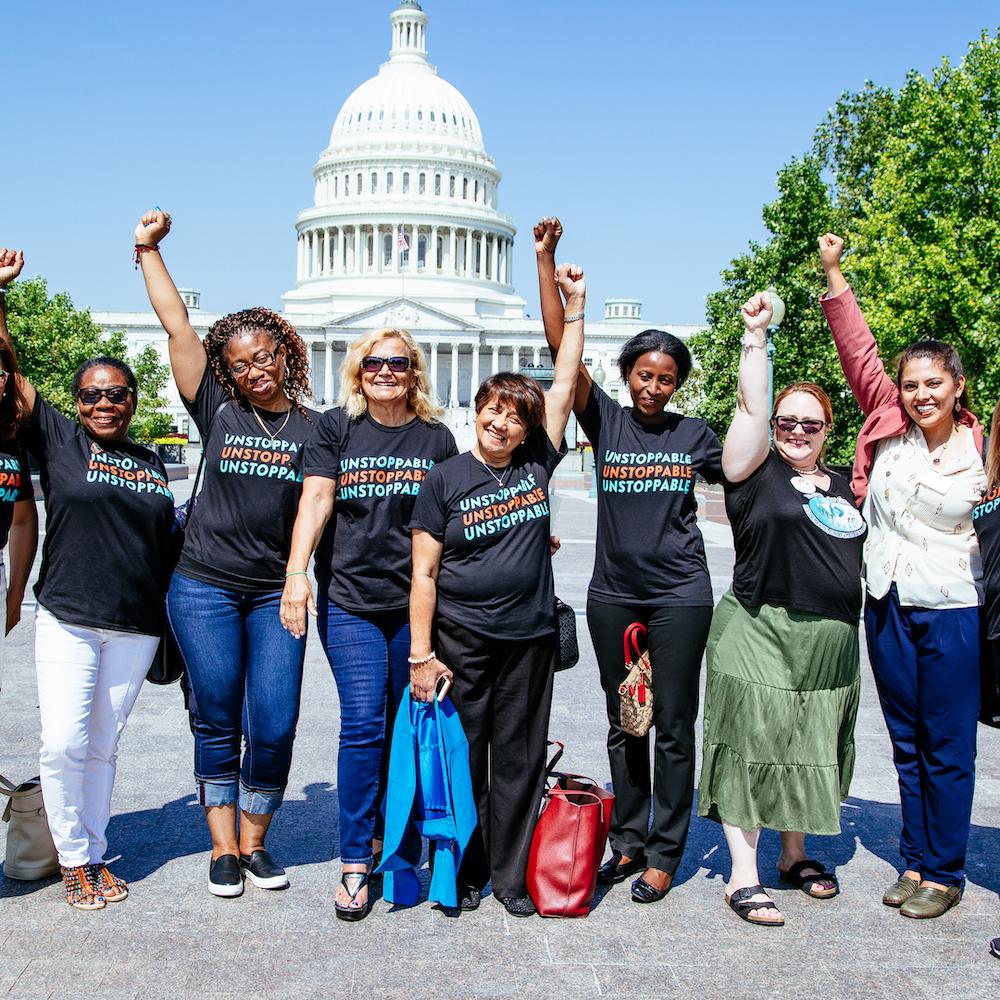
Care workers and domestic workers visit Washington, D.C. in 2020. (Image credit: Othello Banaci for the National Domestic Workers Alliance)
With roughly 4 million children born and another 4 million people turning 65 each year in the United States, the demand for in-home care continues to rise sharply, and there aren't enough care workers to help.
To sound the alarm on this growing "care crisis" and spotlight the contributions of U.S. care workers, the National Domestic Workers Alliance and its partners in the labor movement and among worker advocacy groups are hosting the Care Workers Can’t Wait Summit in Washington, D.C. on Tuesday and Wednesday of this week.
“We really want to take the time to gather in D.C. to celebrate and recognize care and care workers,” said Jenn Stowe, executive director of the Alliance. “We know they provide crucial services to our families. They hold up our families and our loved ones.”
The gathering will serve to “galvanize the excitement” around the Joe Biden administration’s move to observe Care Workers Recognition Month this April. It's also the start of a renewed effort to educate Americans about the role of care workers, improve the quality of jobs, and recognize the care workers who are fighting for an equitable economy that benefits all workers across care industries, Stowe said.
Care workers: From unpaid to underpaid
Nearly 9 in 10 Americans provide unpaid care for a child or a family member. For many, that means facing the extremely difficult choice of continuing to work or providing care for loved ones. In 2018, the International Labor Organization reported that the 16 billion hours spent on unpaid caring every day would represent nearly a tenth of the world’s entire economic output if it was paid at a fair rate.
Even paid care work usually doesn't pay enough to live on. “Often care workers are making poverty wages," Stowe said. Domestic care workers, the majority of whom are low-income women of color and immigrants, are often employed directly by families rather than companies, leaving them in employment grey areas with little oversight. "They don’t benefit from the protections that other workers have, even though they wake up every day and demonstrate the commitment to the families they care for, and oftentimes they are really working in difficult work conditions," Stowe said. "They are expected to do unpaid work. They engage in a lot of physical labor and long hours. Oftentimes they make so little that they’re working multiple jobs to cover their own costs at home.”
One of the biggest problems care workers face is that their work is too often undervalued, despite it being “fundamental to being human,” Stowe said. “Care is often thought of as something very individualistic," she explained. "Pivoting to understand that care is something that the government should intervene in and that we should build a system around an entire care economy is something that people can do to really change the perceptions around care work and to also recognize care workers."
Seeking a fairer care economy
A positive sign for care workers is that more are seeking union representation. “We know that 90 percent of the folks who are in the care workforce are women, and the majority of those women are Black women, other women of color and immigrants,” Stowe explained. “Labor union representation would mean that families could rely on a stronger workforce to care for their loved ones because those jobs would really be good jobs. Unions are also instrumental in making sure that workers can have their voices amplified so they can do their work, but also do it with the dignity that they deserve.”
Mary Kay Henry, president of the Service Employees International Union (SEIU), which represents almost 1.9 million workers across the U.S. and Canada, agreed. “Every person and every family needs care workers," she said. "It’s long past time we make sure the Black, Latina, and immigrant women that power our nation’s care infrastructure have a voice on the job together in a union and are paid living wages with the benefits and support they need to thrive."
Organizers with the SEIU will march alongside U.S. care workers in Washington this week to push for a new system that truly values care work and treats care workers accordingly. "Now, at the Care Can’t Wait Summit, working people are coming together to demand nothing short of an economic transformation that centers care work and care workers and charts a course toward a brighter future," Henry said.
The general public also has an opportunity to join the fight and play a major role in improving conditions and wages for care workers. “We want folks who have received care to join us. We want folks who are caring for folks to join us," Stowe said — pointing to the "get involved" section of the organization's website for ways to take action.
“We also know that even just recognizing the value of care and care work and recognizing the folks who provide care in your life can really shift the perception and the devaluation of the work," she concluded. "That’s something that everyone can do, really recognizing how important those workers are to our lives.”
Update: Today, the Biden Administration will announce the most comprehensive set of executive actions ever taken to improve affordable care for families while supporting care workers and caregivers. The order includes "more than 50 directives to nearly every cabinet-level agency to expand access to affordable, high-quality care, and provide support for care workers and family caregivers," according to the administration.
Biden will sign the order at an event with family caregivers, people with disabilities, older adults and care workers, including members of the National Domestic Workers Alliance. Stowe and Ai-jen Poo, president of the Alliance, called the move a "tremendous milestone for families and workers across the country."
Consumers Care About Sustainability: Mastercard Shows How Business Can Respond
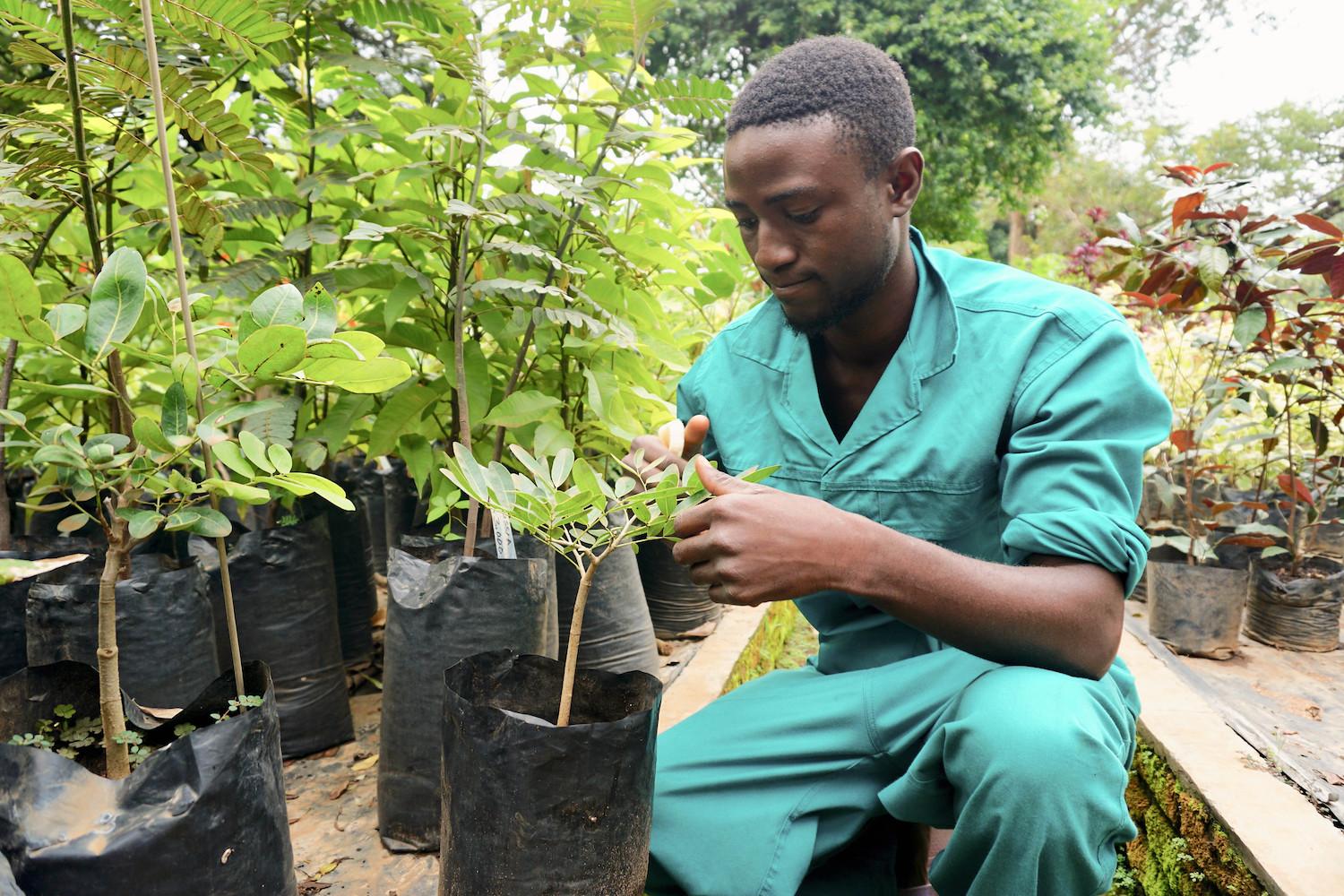
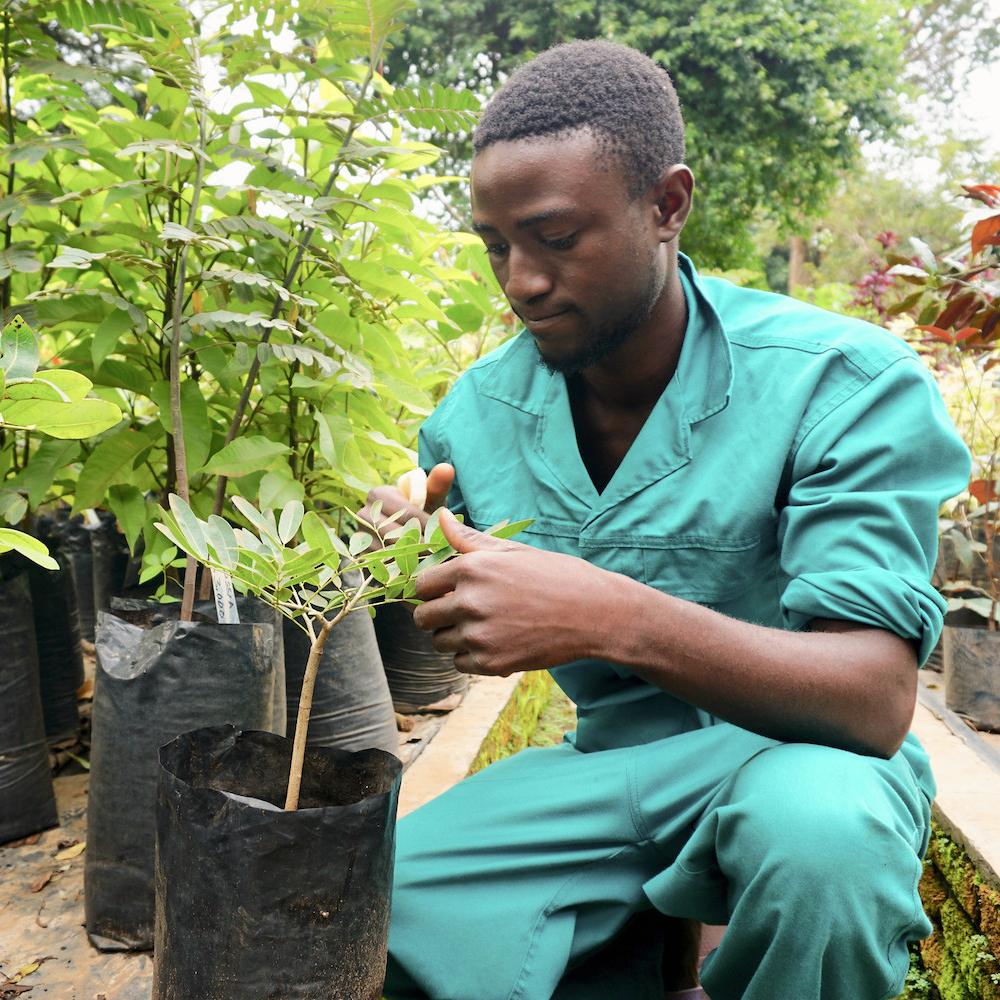
Launched by Mastercard and made up of nearly 140 global partners, the Priceless Planet Coalition supports tree-planting and restoration efforts around the world. Here, Ernest works at the Four Seasons nursery in Lilongwe, Malawi, which propagates local indigenous trees and other types of plants. (Image credit: Sabin Ray, World Resources Institute)
Mastercard is among the leading businesses pushing for a more environmentally sustainable future — and as far as the company is concerned, the momentum for these efforts is coming directly from consumers.
“Consumers are really the key drivers of change for brands and corporations,” Cristina Paslar, Mastercard’s executive vice president for ESG Products, told TriplePundit. "We have policymakers, yes, but I would say the strongest voice is actually the consumer point of view and the consumer demand. Consumers can vote with their decisions, with their purchases and with their preferences.”
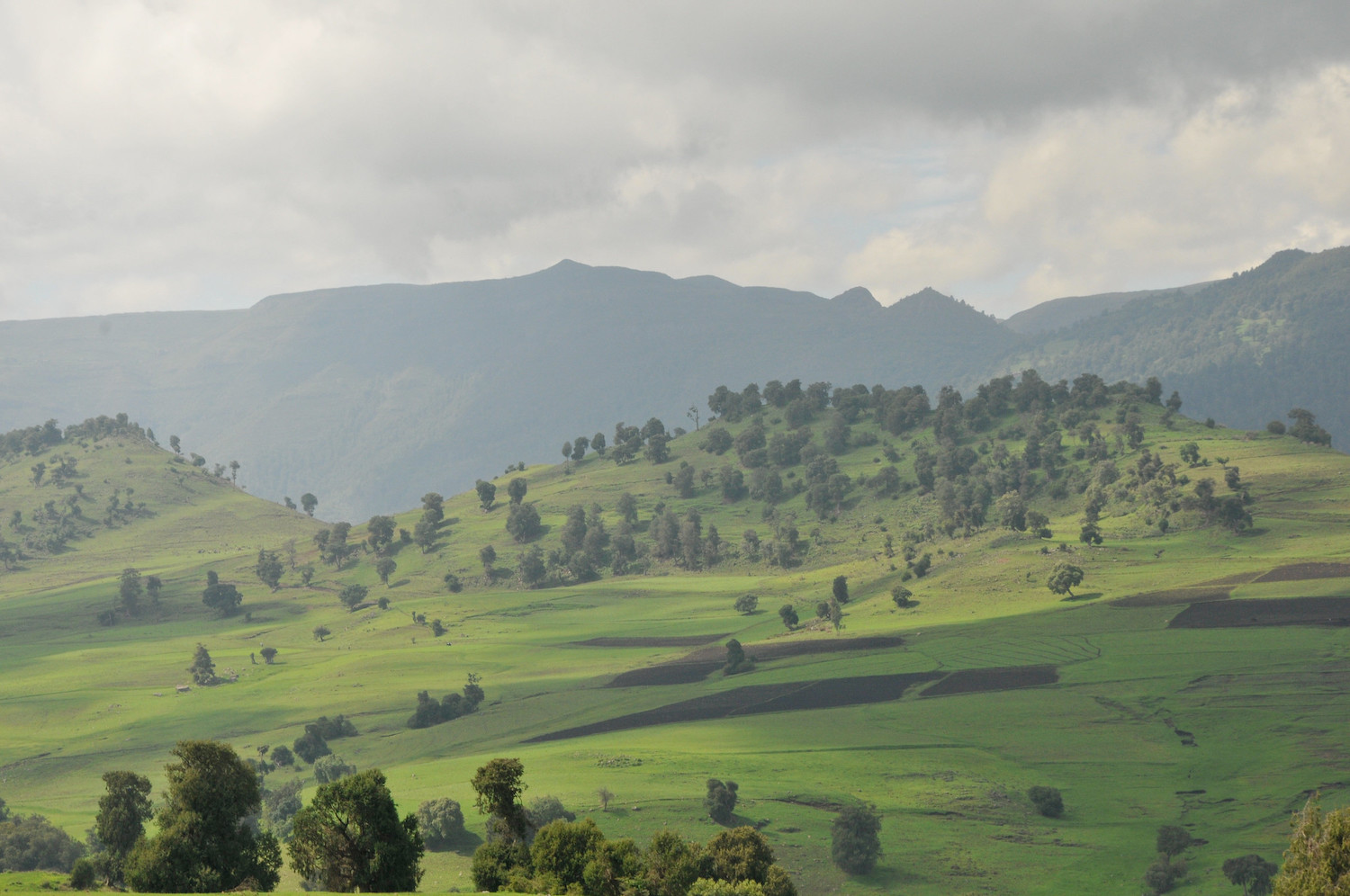
Answering consumer calls for more sustainable choices
Nearly 65 percent of U.S. consumers see climate change and resource scarcity as serious and imminent threats, with over half willing to take personal action, according to a 2022 survey. Globally, charitable donations at environmentally-focused charities increased by 26 percent from 2021 to 2022, ranking second in year-over-year growth among all charitable causes, according to the Mastercard Economics Institute.
To address this growing interest, Mastercard has taken steps such as working with global industry players to develop a sustainable card program for all card issuers globally, including a directory of sustainable materials and vendors for card products. Starting Jan. 1, 2028, all newly produced Mastercard plastic payment cards will be made from more sustainable materials and approved through a certification program, in a first move for a payment network.
Mastercard’s sustainable card offerings are available to consumers in more than a dozen countries globally. The company has engaged more than 330 financial institutions to issue cards with approved materials, and more than 60 financial institutions have issued cards with approved materials made from recyclable, bio-sourced, chlorine-free, degradable and ocean plastics. Six billion credit and debit cards are produced annually, typically from polyvinyl chloride (PVC), which includes dangerous chemical additives including phthalates, lead, cadmium, and/or organotins, which can be toxic to children. These cards are replaced on average every three to four years, with discarded cards going to landfills across the world.
“We closed last year with more than 170 million sustainable cards ordered to date, which was beyond the 120 million we expected,” Paslar said. “That shows that more and more of our customers are thinking, ‘Yes, why not have a card that, instead of being made from virgin plastic, is made of a sustainable material?’”
Mastercard also created a Carbon Calculator in conjunction with the Swedish fintech startup Doconomy, which provides consumers with the means to view the estimated carbon footprint of their purchases in order to better understand where their choices have the greatest impact.
Card issuers, which include banks, credit card companies, credit unions and other financial institutions, also recognize these shifts in consumer preferences, Paslar said. And they’re looking for “natural” ways to inform and empower consumers to make more sustainable choices with the products and services they purchase.
“We see high engagement from the card issuer side, where they see how they can play this role in informing, inspiring and enabling their consumers,” she explained. “But at the same time, we have good signs that consumers are actually engaging with this type of solution.”

Bringing the public and private sectors together for transformative change
Of all Mastercard’s efforts to counter climate change and promote sustainability, the most prominent and potentially far-reaching is the Priceless Planet Coalition, which encourages collective action across the public and private sectors to combat climate change.
Launched by Mastercard in January 2020, the restoration effort led by Conservation International and the World Resource Institute aims to restore 100 million trees. The coalition has grown into a global network of nearly 140 partners and a portfolio of 18 high-quality restoration projects on six continents, as well as the island of Madagascar and the Philippines.
The projects were selected with an emphasis on those with the most potential for positive impacts on climate, local communities and biodiversity. The 18 projects range in size from a goal to plant 100,000 trees in Martin County, Kentucky, where deforestation from strip mining has degraded water resources, to planting millions of trees on the island of Madagascar, which has lost 25 percent of its tree cover since the turn of the century.
Efforts like Priceless Planet are also a way for coalition partners to connect with the public around sustainability, as Mastercard survey research indicates that tree-planting and reforestation efforts are “very relatable” for consumers, Paslar said.
“We have 136 partners, and the key to maintaining a strong partnership is to always provide assets and ideas about how we can work together in a way that we feel is commercially sustainable,” Paslar told us. “By commercially sustainable, I mean that the end consumer — the cardholder who is holding our Mastercard cards that are issued by the banks and used at the merchants — they actually care about the climate. They care about having sustainable choices, and they care about doing business with brands that are truly acting and engaging on sustainable solutions.”
This article series is sponsored by Mastercard and produced by the TriplePundit editorial team.
Will People Wear New Socks Made From Old Socks? Smartwool Thinks So

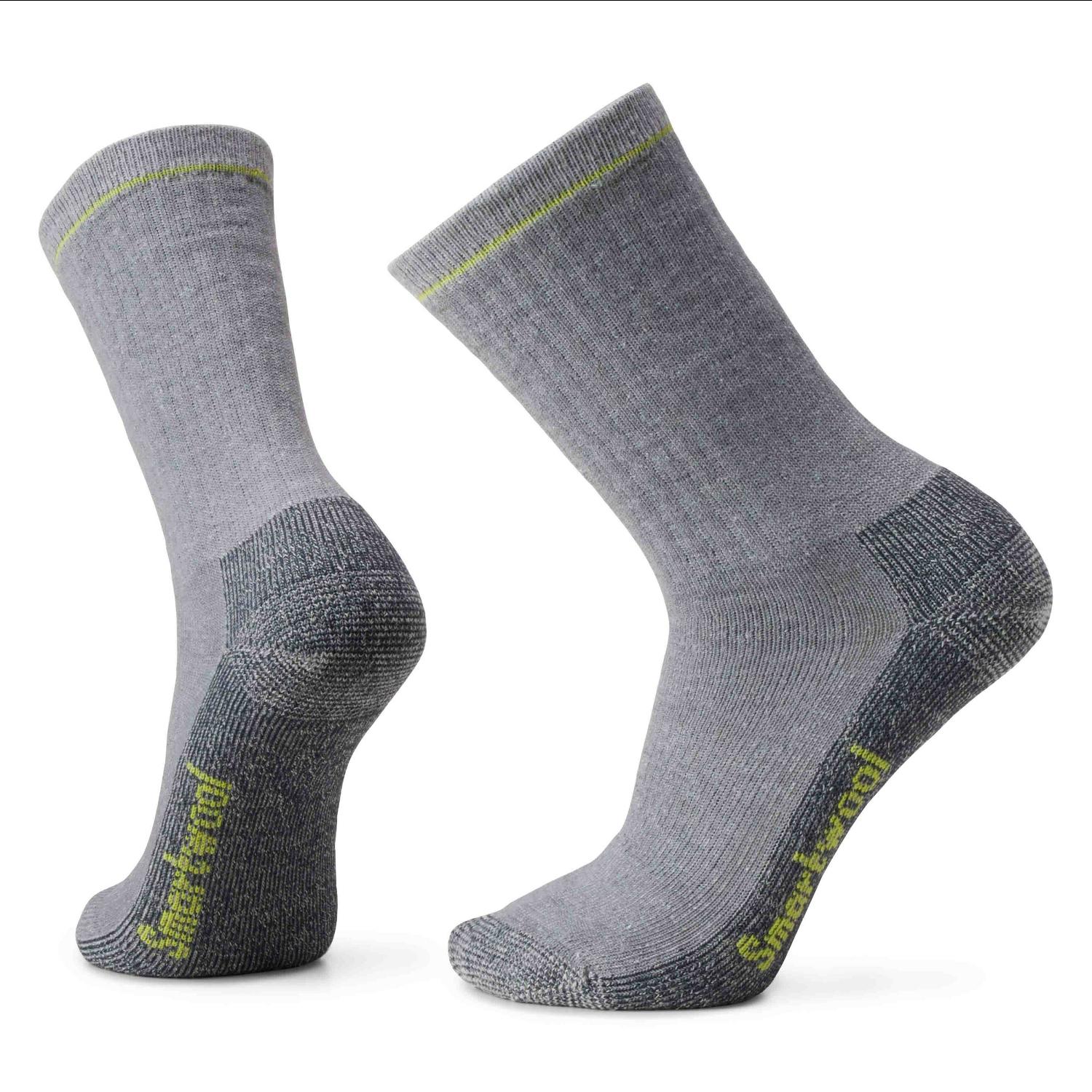
New socks made from strangers’ old socks are now officially a thing. Outdoor gear label Smartwool released the Second Cut hiking sock this month made from reused wool collected in a sock take-back program.
While circular business models definitely took a hit in the early days of the COVID-19 pandemic, the apparel maker is aiming to offer a product that “goes beyond recycling,” said John Ramsey, the brand's director of product development. Of course, truly closing the loop will ultimately depend on consumer demand and participation.
Smartwool sock take-back eliminates unnecessary landfill waste
Smartwool’s Second Cut program accepts used socks of all types and brands. Consumers who are interested in donating can request a return bag with paid postage when they order online, or they can drop their old socks off at a participating retailer.
To date, the company claims to have prevented over 725,000 pairs of old socks from ending up landfills. That’s over 54,000 pounds worth of textiles — a substantial amount of resources that would have otherwise gone to waste. Smartwool’s Second Cut hiking sock is made from the brand’s repurposed wool fibers, while off-brand sock donations were used for the Second Cut K9 Camp Cushion.
En route to extended producer responsibility
Since the Second Cut hiking sock is made exclusively from the brand’s own recycled material, combined with a percentage of new Merino wool, it provides an excellent example of how retailers can begin to take responsibility for a larger share of their products’ environmental impact. While the program does not yet reach the level of full extended producer responsibility — where the maker is on the line for what becomes of the product when it reaches the end of its use — systems like these are a step in the right direction.
"We were able to accomplish this through new and innovative technology, team collaboration, and consumer participation,” Ramsey said in a statement. “Investing in this process has enabled Smartwool to take leaps forward toward our goal of shifting toward a more circular business model."
Smartwool is working with Material Return, a manufacturer based in North Carolina that's focused on circular textiles, to make the business model work. Material Return has partnerships with a variety of other producers, including other sock manufacturers like the Wilson Brown Sock Co. and custom cycling sock maker DeFeet. Additional clients include Basset, the Sustainable Furniture Council and many more.
The consumer response
In order for programs like Smartwool’s Second Cut to be successful, it will be up to consumers to choose to participate — both at the donation point and the point of sale system.
So far, the level of donations is impressive. Of course, while the three-quarters of a million pairs of socks that have been collected since Second Cut’s inception in 2021 sounds like a lot, it is ultimately a drop in the bucket compared to the total amount of textiles that end up in landfills. After all, the U.S. Environmental Protection Agency estimates that 17 million tons of the stuff ended up as solid waste in 2018, the most recent year for which data is available. And there’s no reason to think that amount has gone down in recent years, especially considering the growth of Shein hauls and fast fashion. Scaling up is, after all, the name of the game.
And it’s not just about donating used socks either: Closing the loop will depend on how enthusiastic consumers are about wearing socks that were once on someone else's feet. Will they be into it, or is it a step too far?
Image credit: Smartwool via PRNewsire
Kind Snacks Tests Regenerative Agriculture and New Technologies for Almond Farming


Nearly 80 percent of the world's almonds are grown in California. A pilot project in the state aims to make almond farming more sustainable with regenerative agriculture.
Regenerative agriculture uses a variety of methods to improve soil health with the added benefit of reduced greenhouse gas emissions. The Kind Almonds Acres Initiative combines new technologies with best regenerative practices to understand how they can be applied to growing almonds, Kind Snacks’ top ingredient.
The three-year partnership between Kind and one of its top almond suppliers, Ofi, is testing six practices on six different plots within a 500-acre space in Fresno, California. They’ll utilize standard regenerative practices including cover crops, whole-orchard recycling, and the use of compost and biochar in soils, as well as new technologies like subsurface irrigation, off-ground harvesting and low-carbon fertilizer.
Kind’s sustainability hub encompasses three different pillars: packaging, carbon and ingredients, Lindsay Philpott, sustainability marketing manager at Kind, told TriplePundit. For ingredients in particular, Kind is focused on sourcing almonds sustainably.
"I think there's a really interesting way that Kind can play a role in educating the consumer about how being kind to the planet, and being kind to the soil, will help you be kind to your body because of the nutrient density of ingredients,” Philpott told us during an in-person tour of the project plot last month.
Restoring agriculture while introducing new technology requires a testing approach
Though regenerative agriculture is a growing movement, there is no established definition or set process of applying its practices to tree crops and almonds, said Caitlin Birkholz, regenerative agriculture pillar lead at Kind.
This pilot differs from existing regenerative agriculture projects because it focuses on natural restoration while introducing new technology to magnify natural processes, Birkholz said. The project considers water use efficiency, reducing carbon emissions, bee health and building soil health.
Almonds are one of Kind’s biggest sources of Scope 3 emissions— or value chain emissions from assets not owned by the company, Birkholz said. "Therefore it’s an area that we really want to prioritize and think about when reducing our emissions,” she said. “But there’s other benefits as well like the long-term resilience of almonds and the climate.”
Compost and biochar: Compost and biochar are integrated in the project to build soil health and lower carbon emissions. The almond shells are extracted and put through a pyrolysis process that heats up the organic matter without creating any exhaust, said Zac Ellis, senior director of agronomy at Ofi.
The biochar created from pyrolysis holds micronutrients and microorganisms and has water-holding capacity.
Together, biochar and compost are put back into the soil. This reduces the amount of fertilizer used as the soil is enabled to withhold water for longer, Birkholz said. The practice enhances Kind’s water use efficiency thus lowering the company’s carbon emissions.

Whole-orchard recycling: Historically, an orchard was redeveloped by extracting and burning trees, Ellis said. These practices are huge carbon emitters and contribute to the company’s overall carbon footprint. The alternative, whole-orchard recycling, is the practice of extracting and grinding trees then spreading the by-product across the orchard.
This practice is beneficial to soil health because the grindings contain decades worth of biomass which increases water hold capacity, nutrient use efficiency, and carbon and yields, Ellis said.
Off-ground harvesting: Kind and Ofi worked together to modify another traditional agriculture practice— harvesting almonds through a blower and sweeper process. When almonds are shaken down from trees, a blower and sweeper machine blows and pushes almonds to the middle line of the trees, totaling up to five passes, Ellis said. This method is detrimental because it creates dust pollution, requires fuel and disturbs the top layer of organic matter in soil.
The alternative to this method is using an off-ground harvester. In this practice, the machine catches almonds, conveys them to the back of the machine, and allows the almonds to dry without the need to blow or sweep its dust.
Despite the machine requiring more testing, it has reduced the number of passes and dust pollution, Ellis said.

Subsurface irrigation: Almonds have one of the largest water footprints of all Californian crops. So water use efficiency is a point of focus for the Kind Almonds Acres Initiative. The project uses subsurface irrigation as an alternative to flood irrigation to enhance water use efficiency.
Historically, all rows of an almond tree orchard were flooded with water. This practice is inefficient, Ellis said. In subsurface irrigation, water is fed directly below the ground to a tree’s root. This reduces evaporation of water, weeds and allows growers to harvest almonds simultaneously.
Cover crops: At the final project plot, a mix of five cover crops is used to strengthen soil health, improve soil water retention and support pollinators. The combination of clover, white mustard, sweet clovers, triticale, and phacelia works together to fix atmospheric nitrogen, help with water penetration, and build water depth, Ellis said.
Kind‘s goal is to source 100 percent of its almonds from orchards leveraging regenerative practices by 2030, according to its team. Regenerative agriculture projects help policymakers, businesses and growers get closer to understanding its impact on the environment, profitability and wellbeing.
Image credits: Zeno Group
Editor's Note: Travel and accommodations to California’s Central Valley were provided by Kind Snacks. Neither the author nor TriplePundit were required to write about the experience.
The Ripple Effect: How Good Governance Builds Outward in Commercial Banking
Fifth Third Bank's headquarters campus in downtown Cincinnati.
The introduction of environmental, social and governance (ESG) issues into financial reporting is slowly but surely bringing clarity to the often complex realm of banking. Driven by calls for transparency from governments and investors, as well as the transition to a low-carbon economy, banks are under pressure to evaluate ESG metrics in their investment and lending portfolios. For example, financial institutions are expected to reach net-zero emissions in their portfolios by 2050, among other ESG considerations shaping the sector.
Banks must establish new strategies and assessments, as well as internal governance and accountability structures, to meet and manage these emerging expectations and requirements. Commercial banking is unique in that it faces more governance stressors compared to other industries. Banks are under strict regulatory oversight, have a wide range of exposure to enterprise risks and are highly sensitive to market volatility. On top of that, they’re expected to lead a financial transformation by effectively managing their ESG risks and impacts: For example, if banks only lend to companies that meet a certain ESG threshold, it forces prospective borrowers to meet those requirements.
Governance in the commercial banking industry is complex — if not overwhelming. To shed some light on the topic, we can turn to the example of one bank that has been able to successfully manage its ESG obligations and emerge as a leader.
Fifth Third Bank’s ESG leadership
Headquartered in Ohio, Fifth Third Bank is one of the largest banks in the Midwestern U.S., with more than 1,100 branches across 11 states. The company’s commitment to sustainability has earned it high marks on ESG ratings systems like CDP and Sustainalytics, as well as building trust and confidence among its stakeholders.
“These actions that we’ve done are not because of the more recent ESG fad. It’s part of our purpose-driven company,” Mike Faillo, senior vice president and chief sustainability officer at Fifth Third Bank, told TriplePundit. “Focusing on sustainability has been part of our business for a lot longer, and that has put us in a position of leadership.”
While the ESG movement may be a relatively new development, the idea of social responsibility in banking has a long history. In 1977, the Community Reinvestment Act (CRA) required banks to service the credit needs of all segments of their communities, particularly those of low-income neighborhoods. In the following decades, corporate social responsibility (CSR) initiatives gained traction and prompted banks and other companies to consider the social impacts of their actions. Fast forward to the current day and we have the ESG movement, complete with ESG investment products, ESG bonds, and ESG rating scales widely available to consumers and investors.
With the complexities involved, many bank leaders know they should be setting ESG targets, measuring their progress, reporting their metrics, and publicly disclosing their findings. But exactly how to do that remains the big question.
How good governance drives ESG strategy
“We believe in transparency, credibility and telling our story,” Faillo told TriplePundit. “Transparency is what breeds trust. To make commitments and then report on those commitments, whether you’re achieving them or not, is what builds the trust.”
The key to achieving sustainability goals and mitigating ESG risks in banking lies in a strong and committed leadership structure. “We used to joke back when ESG was first coined that GSE was already taken so they went with ESG, because governance would’ve been the most important,” Faillo said.
Engagement with stakeholders, both external and internal, to identify priorities and challenges is one of the key first steps in developing a strong ESG strategy. Fifth Third conducts stakeholder materiality assessments to determine which sustainability topics are top of mind. The engagement groups include shareholders, customers, employees, communities and regulators. The methods of engagement are extensive, but include shareholder meetings, focus groups, engagement surveys, business resource groups, and community needs surveys and assessments.
As a result of these stakeholder engagement efforts, Fifth Third’s sustainability committee identified — and the board of directors approved — five corporate sustainability priorities for the company: addressing climate change, promoting inclusion and diversity, delivering on its commitment to employees, keeping the customer at the center, and strengthening the communities where the company does business. Each priority has related metrics and goals that can be measured and tracked to gauge performance.
The priorities, goals, and progress are then communicated to the public to show transparency, provide accountability and build trust. The bank also includes sustainability performance on those identified priorities as a modifier to its employee variable compensation plan — which affects a wide group of employees, not just the bank’s executives. More details on Fifth Third’s sustainability strategy and accountability mechanisms can be found in its most recent ESG report.
The commitment to those sustainability priorities is also evident by the company’s sustainability business resource group, which is open to all employees across the business. “The group is focused on driving employee development and education on sustainability topics,” Faillo said. "We bring in speakers, both externally and internally, to teach and discuss these topics. It also focuses on community involvement and business innovation.” The group has over 750 members and drives many of the company’s ideas about how to overcome hurdles and improve ESG priority performance.
Along with the contribution from employees on ESG topics, the bank’s executives also chair a sustainability committee that meets on a quarterly basis to review metrics and provide another layer of internal accountability. The committee is chaired by the chief corporate responsibility officer, and includes the bank president and CEO, among other high-level executives.
The commitment from Fifth Third to integrate sustainability into day-to-day operations, and not just as something to be done once a year on the side, allows the bank and its employees to be recognized as sustainability leaders in their industry.
What’s next for ESG in commercial banking?
The landscape of ESG reporting is constantly changing, and sustainability leaders need to keep updated on the latest developments. In the U.S., mandatory climate disclosure rules from the Securities and Exchange Commission (SEC) are expected to take effect in 2024, with reporting required for large companies. Similar disclosure regulations are already on the books in the European Union and the U.K., and mandatory disclosures are coming soon to Canada, New Zealand, Switzerland and other countries.
Most disclosure requirements for financial institutions are based on the Task Force on Climate-Related Financial Disclosures (TCFD) framework. A global standard for reporting is also in the works from the International Sustainability Standards Board (ISSB) and is expected to be adopted by more than 40 countries as their mandatory disclosure requirement.
Banks require strong governance structures to prepare for those reporting obligations and develop comprehensive ESG strategies that are integrated into the business. Fifth Third’s work represents a promising blueprint for others in the sector.
This article series is sponsored by Workiva and produced by the TriplePundit editorial team.
Image courtesy of Fifth Third Bank
Green or Greenwashed: How Retail Can Combat Misleading Claims

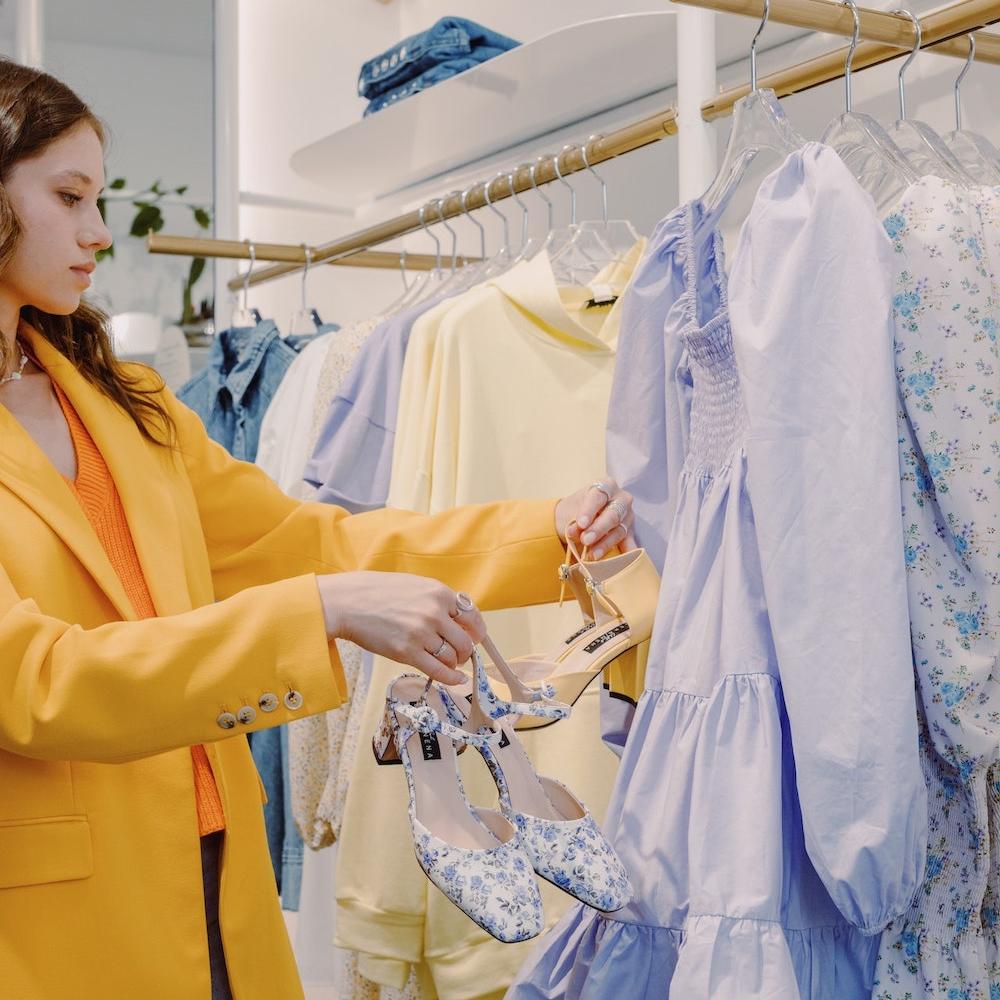
Greenwashing, where companies make false or misleading claims about a product’s environmental benefits in a bid to appeal to eco-conscious consumers, is plaguing the retail industry. This problem not only leads to a breakdown of consumer trust, but it also threatens the future potential for legitimate retail circularity and diminishes the value of brands with products that are truly sustainable.
Across the board, consumers are gravitating toward sustainability. The sustainable fashion industry, for example, is valued at $6.5 billion and is expected to hit $15 billion by 2030 – indicating how hungry consumers are for eco-conscious brands. Still, a recent KPMG survey found that while 75 percent of millennials are ready to change their buying habits in favor of environmentally-friendly products, only 26 percent actually trust brands’ environmental and sustainable claims. This is a direct consequence of brands using misleading labels, hiding the truth about production processes, or misrepresenting environmental standards and certifications.
Just a few recent cases of greenwashing that have made headlines include claiming products are 100 percent recycled when only pieces of the product are, marketing undergarments as safer alternatives to menstrual cycle products even though they contain harmful chemicals, and appointing a big-name celebrity “sustainability ambassador” with a well-documented, outsized carbon footprint.
Unearthing the root causes of greenwashing
In a rush to capitalize on sustainable trends, many retailers have been more focused on marketing the “right” message than actually walking the talk. No longer willing to take brand statements at face value, consumers and investigative journalists are now taking a more active role in uncovering greenwashing, but the process is harder than it sounds.
Validating marketing claims requires a level of contextually relevant and accurate product information, traceability, and supplier data-sharing that is largely unseen in retail supply chains today. Supply chains are complex, involving multiple suppliers, manufacturers and intermediaries, making it all the more difficult to trace products from origin to final destination. As a result, unscrupulous suppliers, who may not be transparent about their sustainability practices, sometimes slip through the cracks.
Finding that half of the environmental claims used to advertise products in the European Union are misleading or unfounded, the European Commission is preparing to introduce rules to prevent greenwashing. One method involves the use of digital product passports or profiles that contain pertinent information on the product’s material extraction, production and recycling processes, which can then be shared with the entire value chain. Other regulations center around extended producer responsibility, placing the onus on producers for their product’s end-of-life impact on the environment.
As ESG regulations continue to ramp up, companies will need to prioritize product traceability and consumer transparency or face significant reputational, financial, and potentially regulatory damages.
How technology can help consumer transparency flourish
With EPR (extended producer responsibility) and DPP (digital product passport) regulations in the pipeline, in addition to growing regulatory pressure to disclose or ban products that cause deforestation, building a product “profile” early in its lifecycle sets a critical foundation for persistent identification.
Once that digital passport has been established to underpin transparency and traceability, data carrier technologies such as radio frequency identification (RFID) and 2D barcodes, like a QR code, can be used in accordance with industry standards to take these regulatory initiatives a step further.
With their ability to convey and link to a broad range of data, RFID tags and 2D barcodes can be scanned at various points in the supply chain to provide real-time information to trading partners about a product’s origin, conditions during transport and supplier sustainability practices, including produced waste and the overall environmental impact of a product. This information can even be shared with consumers through mobile phone scans.
With an initiative called Sunrise 2027, facilitated by standards body GS1 US, the retail industry is aiming to achieve widespread acceptance of 2D barcodes at point of sale within the next four years. Some of world’s most iconic fashion brands including Burberry, Mulberry, Giorgio Armani and Stella McCartney have already begun adding QR codes to labels for better shopper engagement. By scanning the codes with their smartphones, consumers can learn how the product was made, where the materials came from, and whether or not it was sustainably created. They can also receive important care and repair information to extend the item’s life.
Patagonia is another one of the many forward-thinking brands already using this type of 2D barcode. Ninety-four percent of Patagonia’s product line is made from recycled materials. In lieu of sharing product information, care directions and community initiatives on hang tags, the company has added QR codes to its packaging that web-enables access to all of this rich data. This gives Patagonia customers a more personalized and localized experience, while reducing the amount of single-use tags. The change has enhanced the company's consumer engagement and allowed it to collect more data across all points of sale, better identify instances of counterfeiting, and reduce environmental impact.
Paving the road to circularity
Improved data quality, product traceability, and supply chain transparency are critical stepping stones on the path to circularity. In a truly circular economy, retailers will be able to redesign, reuse, repair, and recycle products instead of relying on virgin materials, thereby reducing waste and ensuring the continuity of finite resources.
If we can more accurately validate the claims made by retailers, we’ll have a better understanding of how far the industry has come with circularity and how much further we have to go. Businesses are taking critical steps, exploring ways to make recycling easier for consumers and reducing the amount of products that end up in our landfills. However, truly advancing sustainability depends on upholding the standards for data quality, traceability, and transparency that enable us to hold every supplier and retailer accountable for greenwashing.
Image credit: Ron Lach/Pexels